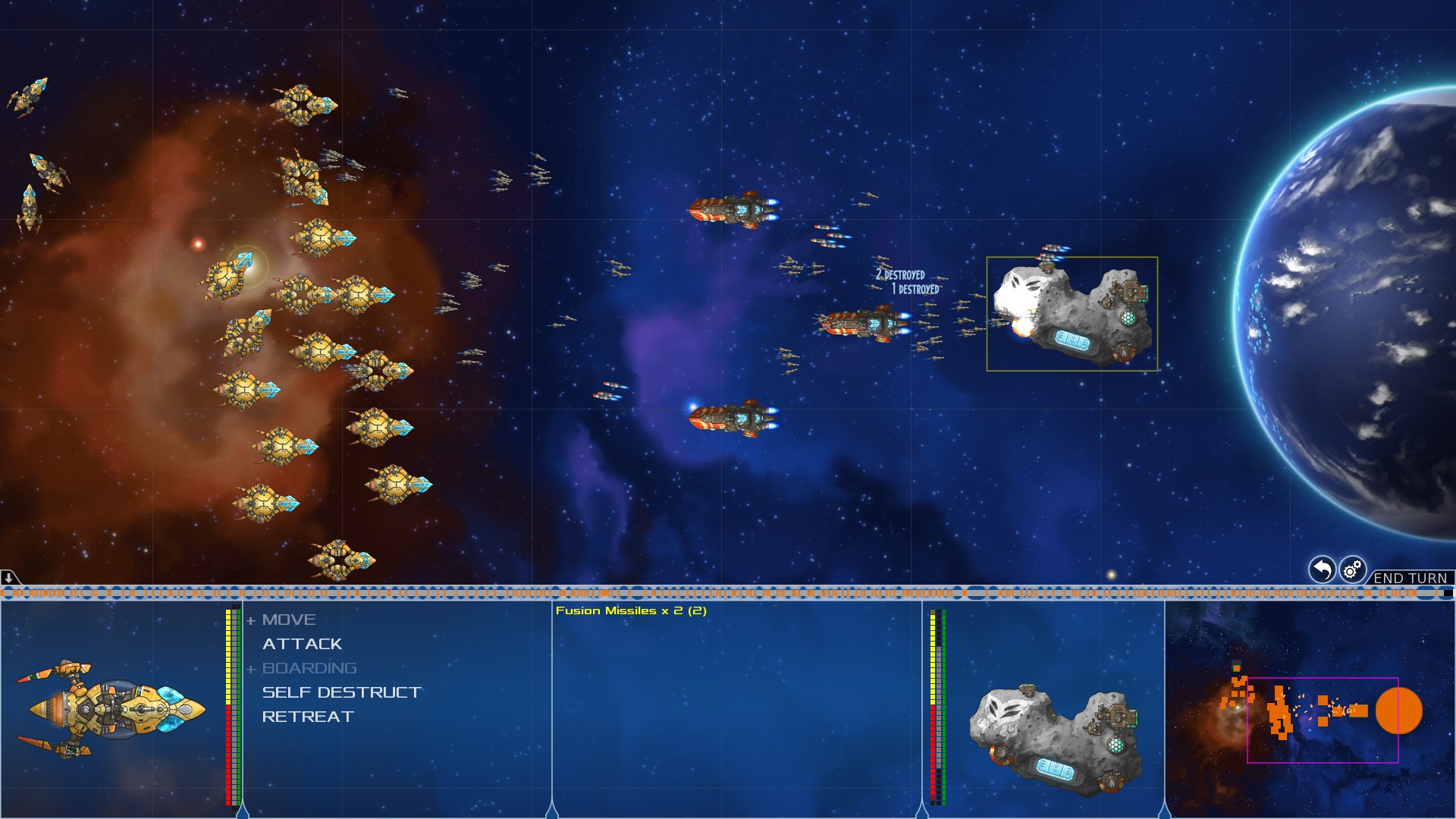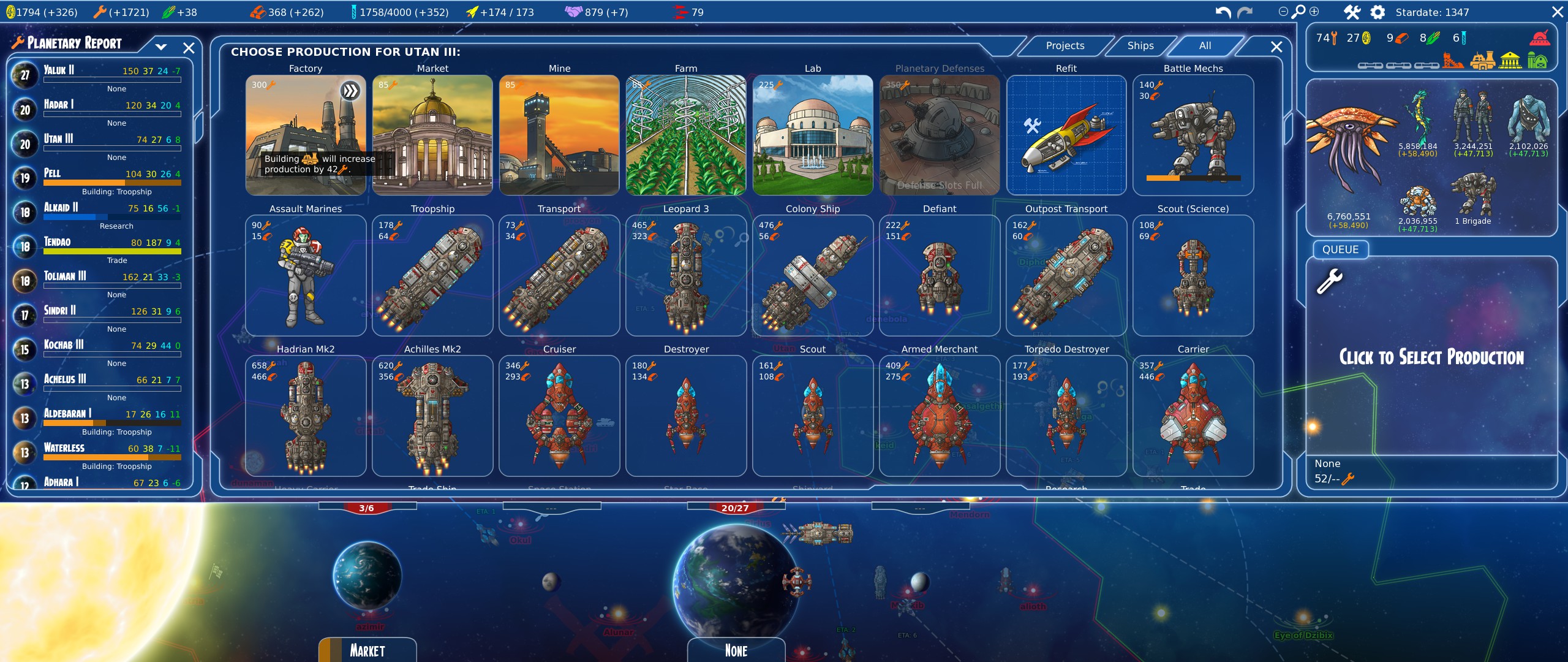Stars in Shadow is a 2017 space 4X game that bears more than a passing resemblance to the classic Master of Orion 2. It succeeds through focus and polish — this is a game that captures the essence of 4X strategy in a clever, colourful, and relatively quick-playing experience.
The first thing that stands out about SiS is its combination of speed, pacing, and elegance. This is very much a game about “interesting decisions”, with minimal micromanagement. Planetary management is simple (much simpler than in Civilization, MOO2, and most other 4X games), allowing the focus to remain on the galactic map. Ship design is also fairly straightforward, with ships having a fixed number of hardpoints rather than giving the player a freeform tonnage “budget” a la MOO2. Perhaps the most in-depth sub-system is tactical battles: I’ve pulled off nail-biting victories against superior fleets, which let me seize the initiative against depleted opponents.
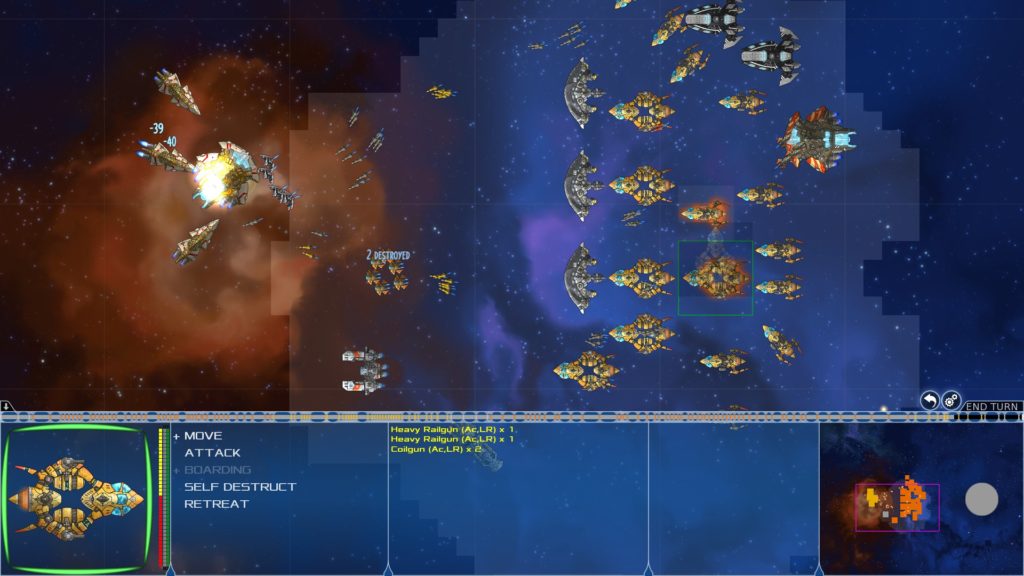
The second thing that stands out is the challenge — if there was ever a computer player that read Machiavelli, this is the one. Smaller computer players will league together in balance-of-power alliances. Larger ones will opportunistically demand worlds along the border; launch limited wars if the player defies them; then smugly suggest peace once they achieve their objective. At war, they field large doomstacks of technologically sophisticated designs. Playing on Hard, I have to use every trick at my disposal: making good use of diplomacy, splitting my fleet into smaller raiding parties, and designing ships with the range to strike at unexpected parts of the map.
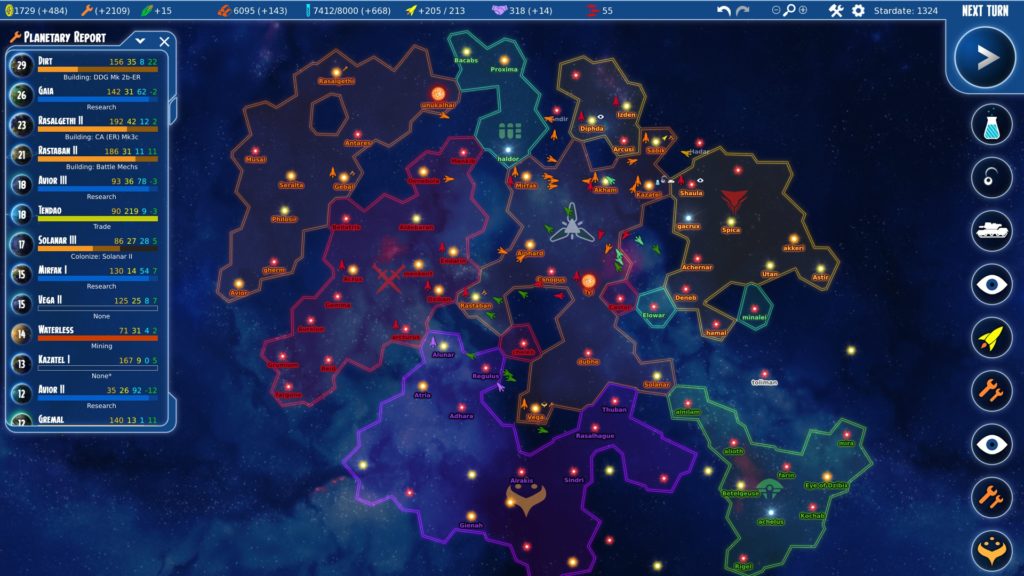
Third is the game’s charm and character. The art is vibrant and colourful, and the different playable species are qualitatively distinct — thematically and in their mechanics. For example, here is my favourite species, the ever-optimistic Phidi:
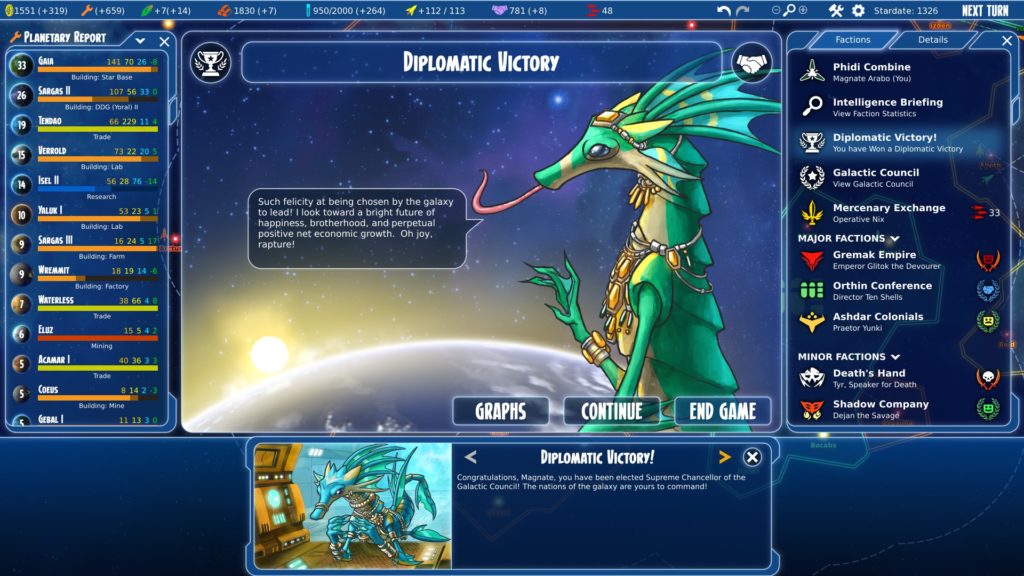
The Phidi prefer trade, friendship, and negotiation to violence, which makes them a perfect fit for my 4X playstyle. They receive extra income relative to other species, and can hire mercenaries from other empires with whom they have a trade agreement. Counterbalancing this, they have fewer, and inferior, warship designs; and as an aquatic race, they find many planets inhospitable. As the Phidi, I have to play to their strengths — Friends! Money! Lots of money! — and aim for a diplomatic victory. Along the way I hire lots of mercenaries to supplement my indigenous fleet, and use citizens of other species to settle the land.
The best praise I can give Stars in Shadow is that I’m currently on my 6th game, after 3 earlier victories and 2 defeats/abandoned games. It’s rare that I play a 4X so many times before considering myself done, yet this game has the magic that keeps me coming back. It frequently goes on sale for very cheap — I paid around A$8 for the game plus DLC — and if you enjoy the 4X genre, this is well worth a look.
